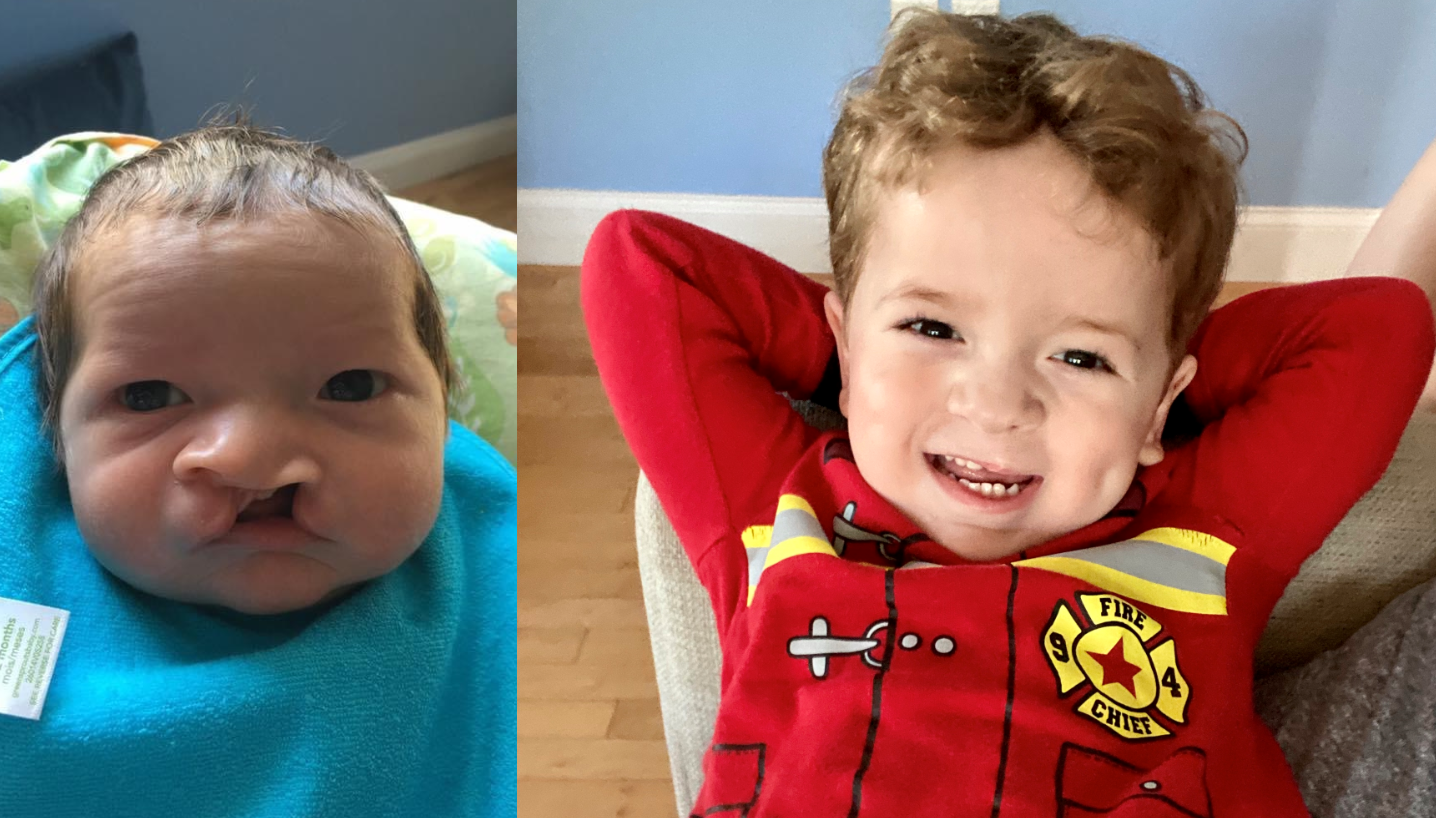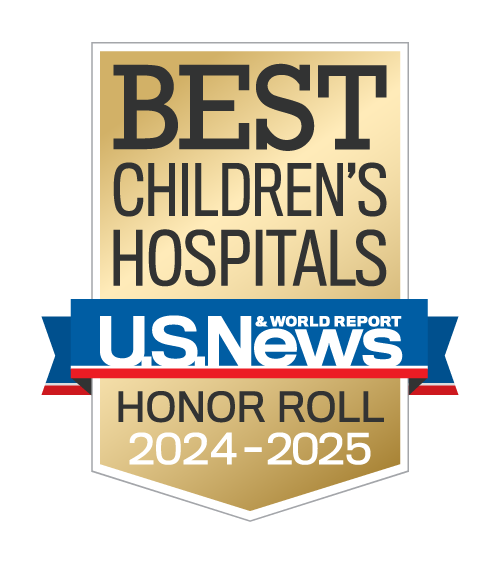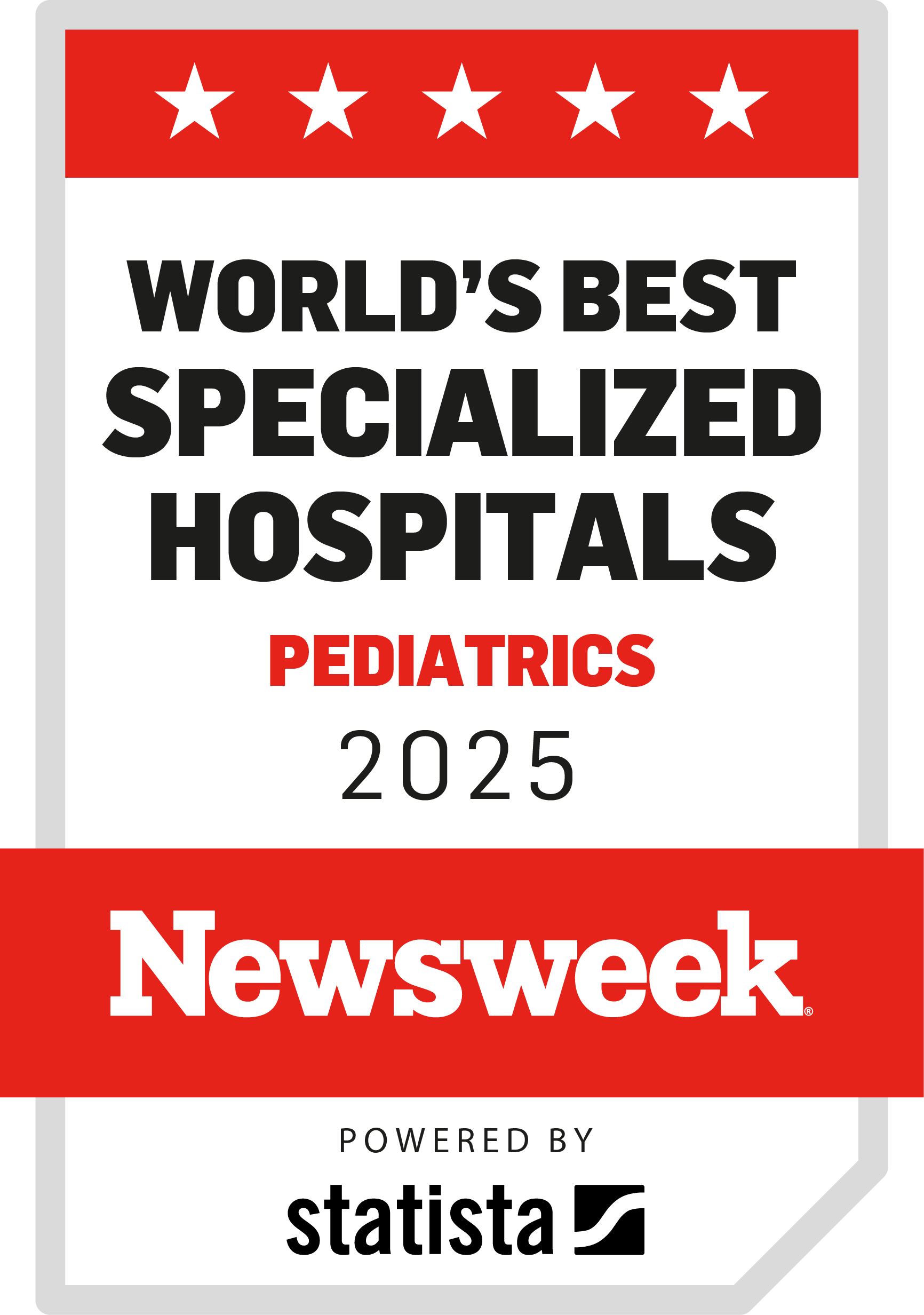Cleft Lip and Cleft Palate | Symptoms & Causes
The shape and structure of a baby’s mouth and face begin to materialize in the early weeks of pregnancy:
- Around the fifth to sixth week, the two sides of the upper lip fuse together.
- By the eighth to ninth week, the roof of the mouth is formed.
However, when something disrupts one or both of these processes, the result is often condition called cleft lip and/or a cleft palate.
- A cleft lip is a split, or cleft, in the skin of the upper lip. This defect can range in size from a tiny, almost imperceptible hole to a very large opening that includes the top gum and top jaw.
- A cleft palate is an opening in the roof of the mouth. This opening can go through the bony hard palate around the top row of teeth; through the fleshy soft palate at the back of the mouth; or through both parts.
Many children have both a cleft lip and a cleft palate. If the defect only occurs on one side, it is called unilateral. If it involves both sides, the cleft lip and cleft palate is bilateral.
Cleft lip and cleft palate can present a number of challenges for a child, including possible:
- Feeding issues
- Dental and orthodontic problems
- Speech and language difficulties
- Hearing impairment
- Social and self-esteem challenges
Because cleft lip and cleft palate can vary widely in severity from child to child, treatment options also encompass a broad spectrum. A baby with a very minor, unilateral cleft lip, for example, might only need one procedure, while an infant with a more involved cleft that runs through both sides of his palate may require many different interventions throughout their life into the teenage years or early adulthood.
You can rest assured that — regardless of the extent of your child’s cleft lip and cleft palate — there is plenty of cause for hope: These conditions are very manageable. In fact, thanks to recent advances in diagnostics and care, treatment can often shortly after birth.
Here at Boston Children’s, our multidisciplinary Cleft Lip and Palate Program is designed to meet the needs of children of all ages and with all variations of cleft lip and cleft palate. No matter your child’s specific circumstances, we are ready to help them — and to include you and your family in the treatment process at every step of the way.
What causes cleft lip and cleft palate?
We know that cleft lip and cleft palate are congenital defects — which means they are present at birth — and that they involve a disruption to the formation of the fetus’s top lip and/or roof of the mouth. However, no one knows exactly why these disruptions take place.
It is believed that cleft lip and cleft palate may be genetic conditions (resulting from an error in the genes). Some children with cleft lip and cleft palate have other family members with the defect, but in most cases, there is no evidence of any family history.
Scientists believe that some instances of cleft lip and cleft palate may happen because of something that affected the mother during pregnancy, including:
- Taking certain medications
- Using tobacco or alcohol
- Vitamin deficiency
- Viral illness
Finally, in rare cases, a child’s cleft lip and cleft palate may be related to a syndrome such as Van der Woude syndrome, Stickler syndrome, or Kabuki syndrome.
What are the symptoms of cleft lip and cleft palate?
Nearly all babies with cleft lip and cleft palate are diagnosed at birth (or even before, through prenatal ultrasound) because the defects are readily apparent.
In rare cases, a child may have a cleft palate that only involves her soft palate (the fleshy tissue at the back of her mouth) and isn’t evident on an initial visual exam. The first sign of a problem in these babies is usually difficulty feeding (an inability to latch on to the breast or bottle nipple, or to use consistent suction while nursing).

Watch: What to expect if my baby has a cleft lip/palate
Hear from Dr. Carolyn Rogers-Vizena, a pediatric plastic surgeon at Cleft and Craniofacial Center and the Department of Plastic and Oral Surgery.
Cleft Lip and Cleft Palate | Diagnosis & Treatments
How is cleft lip/cleft palate diagnosed?
In most cases, a prenatal ultrasound can detect cleft lip alone or cleft lip and palate as early as 16 weeks into a pregnancy. The diagnosis is then confirmed at birth with a detailed visual assessment and physical examination. In some cases of incomplete cleft lip, the diagnosis cannot be seen on ultrasound and is made for the first time at birth.
Cleft palate can occur alone, without cleft lip. This type of cleft may not show up on ultrasound and may be diagnosed for the first time at birth. At that point, a clinician will perform a comprehensive exam to identify the exact nature of the problem and determine whether the cleft involves the hard and soft palate, or the soft palate only. In a small number of cases, cleft palate is diagnosed on a fetal MRI performed for other reasons, such as a small lower jaw. Infrequently, a minor case of cleft soft palate will not even be seen at birth and will become noticeable later when the infant experiences difficulty feeding.
How we treat cleft lip and cleft palate
Treatment for a cleft lip/cleft palate usually involves reconstructive surgery and several key support services.
The Cleft Lip and Palate Program at Boston Children’s Hospital takes a multidisciplinary team approach to repairing your child's specific cleft and addressing related conditions.
While your child's treatment plan will depend on their individual circumstances — as well as your family's preferences — here are some frequently asked questions about treating cleft lip/cleft palate:
Surgical repair: Cleft lip
Many children with a unilateral complete cleft lip and palate have a large gap between their gums. To move the gums and palate into a closer position, presurgical orthopedics are often recommended. In most cases, this is a Latham-type appliance. A dentist inserts this device in the operating room when a child is around 2 or 3 months old. You will need to turn a small screw on the device to slowly bring the gums together. The device is removed at the time of either lip-nasal adhesion or complete cleft lip repair.
For some children with unilateral cleft lip who have more severe nasal asymmetry, nasal molding may be recommended. A DynaCleft® nasal elevator is an external device that may be started at the first clinic visit. This device slowly rounds and elevates the nasal cartilage to improve nasal shape and can be used with or without a Latham-type appliance.
For some children with a unilateral cleft lip, the first operation recommended is a lip-nasal adhesion. This operation is performed at about 3 months of age, and involves:
- Simple closure of the lip
- The first stage of nasal correction
- When possible, closure of the cleft in the upper gum (this procedure is called gingivoperiosteoplasty)
When a single operation is recommended, either for unilateral or bilateral cleft lip, it typically occurs when the child is between 3 and 5 months of age. During this operation, the baby's nasal asymmetry (unevenness in the shape of the nose) is also corrected. A plastic surgeon uses the existing muscle and tissues of your child's lip and nose to close the cleft. Repair of a unilateral cleft lip is performed in the operating room under general anesthesia. Your child will stay in the hospital for one to two nights after the operation.
In children for whom two operations are recommended, the first is lip-nasal adhesion. The second operation is a more comprehensive repair of the cleft lip and correction of the nose. This procedure usually takes place around three months later, at 5 to 6 months of age.
After the operation, your child's lip, nose, and face will be swollen for a few days. The scar may be red for several months. It will take 6 to 12 months for the scar to soften and fade.
Although it will never completely disappear, in time, the scar will become difficult to see. Your child's lip and nose will be nearly normal in appearance after the swelling and scar have subsided.

Unilateral complete cleft lip and palate before repair (left) and after nasal molding with DynaCleft, alveolar correction with a Latham appliance, single-stage cleft lip repair, and cleft palate repair.
Although some children need to have another procedure on their lips and/or nose before they begin school, or as they enter adolescence, other children never need further surgery.
Children whose cleft lips involve the alveolus, or gum line, typically need another operation to help their permanent teeth come in and to make it easier for orthodontic treatments to improve their bite and jaw function. This operation is called an alveolar bone graft, and is usually performed when the child is 8 to 10 years old.
Surgical repair: Cleft palate
A plastic surgeon brings together the separated muscles and tissue from the two halves of the palate to close the opening. This procedure is performed in the operating room under general anesthesia. Your child will be in the hospital anywhere from one to three nights after the operation.
A cleft palate is typically closed between the ages of 9 and 11 months, before a baby makes their first attempt to use words. Your child's plastic surgeon will discuss the best repair plan for their needs and circumstances.
Immediately after surgery, you should give your child liquid foods, such as stage 1 baby food, using the side of a soft-tipped baby spoon. After around 10 days, your child will be able to have soft foods, such as stage 3 baby foods or soft cut up fruit. Your surgeon may ask you to rinse your child's mouth with water for the first 10 to 14 days after surgery to help keep the stitches clean.
Your child may regurgitate some food and liquid through their nose for up to three months after the operation. This is normal. It takes time for the swelling to go away and for the muscles in the palate to begin working properly. You'll be given further post-operative instructions when your child is discharged.
Approximately five to 15 percent of all children who have undergone a cleft palate repair will need a second operation to correct “nasal”-sounding speech. These operations are often performed around 4 to 6 years old. A common procedure is called a pharyngeal flap, but other operations may be recommended based on your child’s anatomy.
Long-term monitoring and follow-up
The follow-up care your child will need depends on the extent of his cleft lip and/or cleft palate. In our Cleft Lip and Palate Program, we see patients as frequently as every six months to every other year, from infancy all the way through adolescence.
Your treatment team will develop a follow-up schedule that works best for you, your child, and your family.
How Boston Children's Hospital approaches cleft lip and cleft palate
Boston Children's Hospital treats children with cleft lip and/or cleft palate and the combination through our dedicated Cleft Lip and Palate Program.
Our program:
- Is one of the largest in the U.S.
- Cares for nearly 900 children and adolescents every year
- Uses a multidisciplinary approach that combines expertise in plastic and oral surgery, nutrition, dentistry and orthodontics, otolaryngology, and audiology
- Conducts groundbreaking scientific research to better understand the causes of cleft lip and cleft palate, identify new therapies, and work toward finding a cure
Here at Boston Children’s, our compassionate clinicians also understand the emotional and psychosocial toll cleft lip and cleft palate can cause. We recognize your child as an individual — never “just a patient” — and provide vital resources and support to meet the needs of your entire family.



